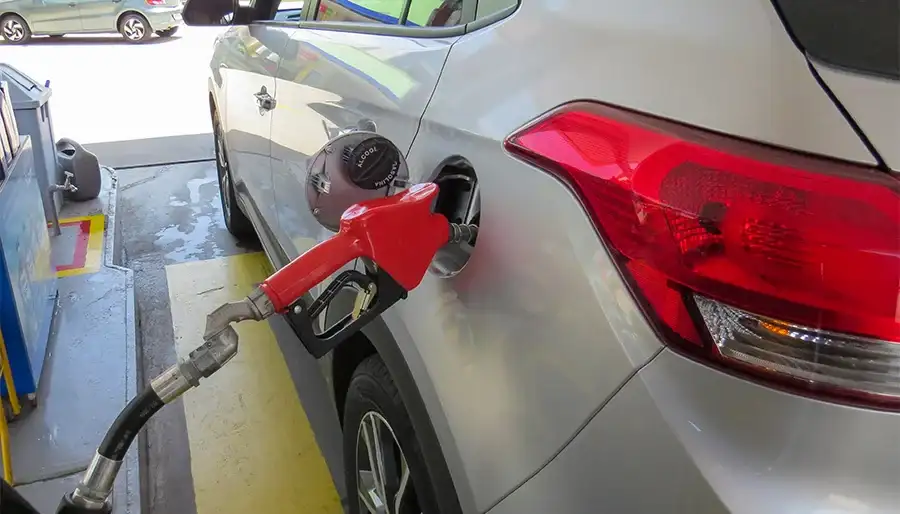
Flex-fuel vehicles, or FFVs, have become popular as more people seek eco-friendly car options. These vehicles offer a unique solution to reducing our carbon footprint without compromising on travel experience. But what are flex-fuel vehicles, and how do they work?
In this article, we'll explore the world of flex-fuel vehicles. We will understand the benefits, challenges, and the latest advancements in this technology.
Key Highlights
- Flex-fuel vehicles can run on a blend of petrol and ethanol, offering flexibility and reduced emissions.
- The use of ethanol in flex-fuel vehicles helps reduce dependence on fossil fuels and supports sustainable agriculture.
- Flex-fuel vehicles need minimal modifications compared to traditional petrol-powered cars. This makes them a simpler option for many drivers.
- While flex-fuel vehicles offer environmental benefits, challenges such as limited infrastructure and slightly reduced fuel efficiency must be considered.
What is Flex-fuel?
Flex fuel, also known as E85, is a blend of petrol and ethanol, typically containing up to 85% ethanol and 15% petrol. Ethanol is a renewable fuel derived from plant materials. Material such as corn or sugarcane is for its production. This makes it a sustainable alternative to traditional fossil fuels.
The use of ethanol in flex-fuel offers environmental benefits. First, ethanol burns cleaner than petrol, resulting in lower carbon emissions. Additionally, the production of ethanol supports sustainable agriculture practices. It also helps reduce our dependence on oil imports.
How Do Flex-fuel Vehicles Work?
Flex-fuel vehicles are designed to run on either traditional petrol or a blend of petrol and ethanol, such as E85. These vehicles are equipped with modified engines and fuel systems that can detect the ratio of ethanol to petrol in the fuel and adjust the engine's performance accordingly.
Benefits of Flex-fuel Vehicles
Why should you consider buying a flex-fuel vehicle when lots of other car models are available in the market? Here are the major benefits offered by flex-fuel cars over others.
-
Reduced Emissions: As mentioned earlier, the use of ethanol in flex-fuel vehicles results in lower emissions of harmful pollutants. By choosing to drive a flex-fuel vehicle, you can contribute to cleaner air and a healthier environment.
-
Support for Sustainable Agriculture: The production of ethanol for flex-fuel vehicles often relies on crops such as corn or sugarcane. By supporting the flex-fuel industry, you're also supporting sustainable agricultural practices and helping to create new economic opportunities for farmers.
-
Energy Security: Flex-fuel vehicles can help reduce our dependence on foreign oil imports, as ethanol can be produced domestically. This increased energy security can lead to more stable fuel prices and a stronger local economy.
-
Cost Savings: In many cases, E85 fuel is less expensive than traditional petrol, meaning that driving a flex-fuel vehicle can result in cost savings over time.
Challenges and Considerations
While flex-fuel vehicles offer numerous benefits, there are also some challenges and considerations to keep in mind:
-
Limited Infrastructure: Currently, the availability of E85 fuel stations is limited compared to traditional petrol stations.
-
Slightly Reduced Fuel Efficiency: As mentioned earlier, flex-fuel vehicles may experience a slight reduction in fuel efficiency when running on E85 due to ethanol's lower energy content. This means that drivers may need to fill up their tanks more frequently when using E85 compared to petrol.
Flex-fuel Hybrid Vehicles
In recent years, there has been a growing interest in flex-fuel hybrid vehicles. These vehicles combine flex-fuel technology with the efficiency of hybrid powertrains. They feature a traditional internal combustion engine. But it can run on either petrol or E85, along with an electric motor and battery pack.
Hybrid vehicles offer the best of both worlds for car owners. They provide the environmental benefits and the flexibility of using petrol when needed.
Flex-fuel Vehicle Options Available in India
If you're considering purchasing a flex-fuel vehicle, there are several options available on the market today. Here is a
list of flex-fuel vehicles from various manufacturers:
- Ford F-150
- Chevrolet Silverado
- Chrysler 300
- Dodge Charger
- Jeep Grand Cherokee
- Nissan Titan
- GMC Sierra
- Ram 1500
- Toyota Tundra
- Volkswagen Golf
The availability of specific flex-fuel compatible vehicles depends on your location. Some models may not be available everywhere. Check with your local dealerships to check the available flex-fuel vehicle options.
When selecting the best flex-fuel vehicle for your needs, be sure to consider factors such as your driving habits, budget, and local E85 fuel availability.
Flex-fuel Vehicles: Driving Towards a Greener Tomorrow
Car owners have become more aware of climate change and environmental sustainability. As a result, the demand for eco-friendly transportation is on the rise. You can do your part for the environment by choosing flex-fuel vehicles.
To ensure, the safety of your flex-fuel vehicle,
car insurance is an essential. Reliance General Insurance provides a variety of coverage options for car owners. Whether you need a basic liability coverage or more extensive protection, RGI has you covered.